Reggae music has a super distinct sound that captivates listeners with its rhythmic grooves, laid-back vibes, cool sounds, and infectious melodies.
The secret to its charm often lies in the reggae chord progressions that instantly get people hypnotized and define the genre as a whole.
Whether you’re a guitarist looking to play reggae guitar chords or a music producer looking to understand the underlying harmony of reggae songs, knowing the most common chord progressions used in reggae music is essential.
That’s exactly why we’re breaking down everything you need to know, like:
- The key characteristics of reggae music ✓
- Common reggae scales and keys ✓
- How to create good reggae chord progressions ✓
- Tips for playing reggae guitar chords from the first beat to the last ✓
- The 11 most common reggae chord progressions ✓
After reading this article, not only will you know how to create authentic reggae sounds, but you’ll also understand the rhythmic elements that make reggae unique.
As well as the ways to use these techniques into your own music.
This way, you can lay down reggae chord progressions that are dynamic, memorable, and extremely engaging.
So, let’s dive in…
Table of Contents
- Reggae Chord Progressions 101
- Top 11 Reggae Chord Progressions
- 1. I – V – vi – IV (C – G – Am – F)
- 2. ii – V – I (Dm – G – C)
- 3. I – IV – V (C – F – G)
- 4. vi – IV – I – V (Am – F – C – G)
- 5. I – ii – V – IV (C – Dm – G – F)
- 6. I – V (C – G)
- 7. I – IV – I – V (C – F – C – G)
- 8. IV – V – I (F – G – C)
- 9. I – iii – IV – V (C – Em – F – G)
- 10. I – bVII – IV (C – Bb – F)
- 11. ii – IV – V (Dm – F – G)
- Bonus Tips for Creating Reggae Chord Progressions
- Reggae Chord Progressions: Final Thoughts
Reggae Chord Progressions 101
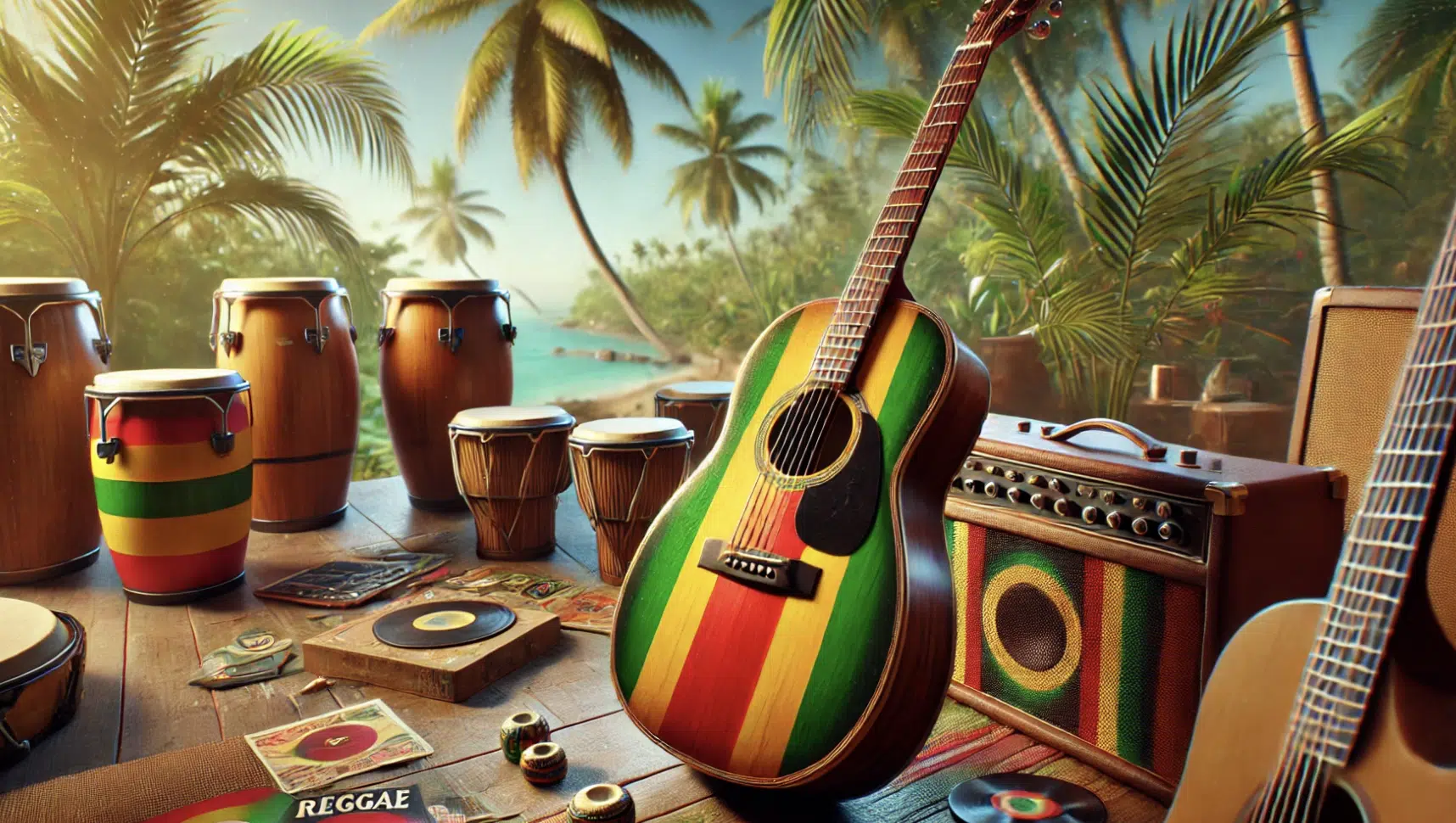
To truly understand reggae chord progressions, it’s important to understand/master the fundamental characteristics that make them unique in the first place.
Unlike many other different genres, reggae often relies on simple yet effective chord progressions that utilize major chords and minor chords in repetitive patterns.
This creates a relaxed and hypnotic groove that’s easy to follow.
The rhythms are typically accentuated by the off beats as opposed to downbeats, commonly known as the “skank,” played by the rhythm guitar.
Most reggae chord progressions are derived from the major scale, and they usually emphasize the use of only two chords or three chords.
These reggae chords are often played in a “two-feel” rhythm, characterized by a steady back-and-forth motion that keeps the beat on the third beat of each measure.
In addition, reggae music frequently uses a bass guitar to play melodic lines that syncopate against the guitar’s rhythm.
This combination creates a layered texture so, when you play reggae, each instrument has a unique sound to bring and role to play.
Side note, if you want to learn more about major chords/major chord progressions, we’ve got you covered.
Top 11 Reggae Chord Progressions
Now that we’ve covered the basics, let’s dive into the top 11 most common reggae chord progressions used by legendary artists like Bob Marley, Peter Tosh, and Steel Pulse. These reggae chord progressions have defined some of the most iconic reggae songs and continue to inspire reggae musicians today. Let’s break them down.
1. I – V – vi – IV (C – G – Am – F)
This progression, known as the “Four-Chord Progression,” is popular across various genres including, you guessed it, reggae.
We started off with this one because it’s a great way to start learning how to play reggae guitar chords due to its simplicity and emotional pull.
The chords in this reggae chord progression create a solid harmonic foundation that supports both rhythmic and melodic variations perfectly.
You can hear this progression in Bob Marley’s “No Woman, No Cry,” which uses these chords to deliver a soulful reggae ballad that people go crazy for.
2. ii – V – I (Dm – G – C)
Another foundational reggae chord progression is the ii – V – I, often used in jazz but adapted to reggae for its smooth, flowing transitions.
It moves from a minor chord to a dominant chord and finally resolves to major chords.
This makes it ideal for creating a relaxed yet upscale sound that feels both familiar and fresh, especially in a reggae context.
Steel Pulse’s “Your House” uses this progression, creating a relaxing and uplifting vibe with its syncopated rhythms, off beats, and expressive instrumental interplay
3. I – IV – V (C – F – G)
This classic progression is one of the most typical reggae song structures.
It provides a solid base for reggae grooves and lets you really get creative with the rhythm section (especially in the bass guitar chords and reggae guitar parts).
Gregory Isaacs’ “Night Nurse” uses this progression, blending slower tempos with rhythmic off-beats to create super smooth, hypnotic sounds that are hard to not vibe out to.
4. vi – IV – I – V (Am – F – C – G)
A slightly more gloomy reggae chord progression, the vi – IV – I – V has been popularized in many reggae tunes for its emotional depth and power.
For songs that need a bit more emotional expression, this pattern is perfect.
It’s a staple in many songs that want to convey a message of struggle and perseverance, and you can hear it in “96 Degrees in the Shade” by Third World (above).
5. I – ii – V – IV (C – Dm – G – F)
This reggae chord progression offers a sweet combination of major and minor chords 一 making it a favorite among reggae musicians from all around the world.
It lends itself to upbeat, danceable reggae grooves and is ideal for creating catchy hooks that really captivating and almost entrance your listeners.
Peter Tosh’s “Johnny B. Goode” adaptation uses this progression because it really shows how reggae can put its unique spin on classic rock progressions for an awesome result.
6. I – V (C – G)
Known as the “Two-Chord Groove,” this is a minimalistic approach that has defined the sound of many reggae hits you most likely know and love.
This progression usually consists of only two chords, often alternating between a major and a dominant chord.
It gives off a hypnotic and steady rhythm that provides the perfect foundation for reggae’s signature syncopated beats.
It is simple but effective, providing a repetitive backdrop for rhythmic and melodic experimentation.
NOTE: By limiting the harmonic movement, this progression allows the bass guitar and reggae guitar to shine with creative riffs, fills, and rhythmic variations that keep the groove engaging without overwhelming the listener.
Bob Marley and The Wailers’ “Stir It Up” is a great example of this progression because it uses the two-chord format perfectly.
7. I – IV – I – V (C – F – C – G)
This variation of the I – IV – V progression adds a return to the tonic chord, creating a circular, almost mesmerizing feel.
It’s perfect for building anticipation and maintaining a strong groove throughout your song.
With this one, you have unlimited improv freedom, particularly when it comes to the guitar chords and bassline (the interplay between the instruments becomes the focal point).
“Pressure Drop” by Toots and the Maytals is an iconic song that features this progression.
The song utilizes this circular chord structure to create a rhythm that is both hypnotic and dynamic.
8. IV – V – I (F – G – C)
This reggae chord progression is widely used to end phrases or sections in reggae songs, providing a sense of resolution/completion.
It’s a great example of how reggae borrows from the blues and gospel traditions 一 adding its own unique rhythmic twist that people find very intriguing.
Bob Marley’s “One Love” uses this reggae chord progression to create a sense of unity and celebration (and is one of my personal favorites).
9. I – iii – IV – V (C – Em – F – G)
This reggae chord progression introduces a minor chord early on, creating an unexpected twist in the harmony.
It’s often used in reggae songs that explore more complex lyrical content.
“Buffalo Soldier” by Bob Marley & The Wailers includes this reggae chord progression to complement its powerful lyrics about history and struggle.
When you listen and hear it, you’ll understand why it’s so impactful and inspiring.
10. I – bVII – IV (C – Bb – F)
This is a more advanced reggae chord progression often used in roots reggae to create a more laid-back and contemplative feel.
This is a great way to add depth to your reggae chord progressions and make your sounds really pop over the competition.
“Redemption Song” by Bob Marley features this progression, and its slower tempo and off-beat accents make it a standout track.
Side note, if you want to learn all about tempo, we’ve got you covered.
11. ii – IV – V (Dm – F – G)
This minor-heavy reggae chord progression is perfect for adding tension and drama to reggae music.
It provides a darker, more emotional contrast to the typically bright and uplifting reggae chords (keep in mind it’s less common, but highly effective when used creatively).
Steel Pulse’s “Roller Skates” uses this progression 一 delivering a more introspective and reflective vibe.
Bonus Tips for Creating Reggae Chord Progressions
To top things off, we’re breaking down 3 bonus tips so you can lay down reggae chord progressions that even Bob Marley would give you props for.
-
Emphasize the Off Beats & Rhythm Structure

One of the most defining characteristics of reggae music is its emphasis on the off beats, which gives it that unique “reggae groove.”
When creating reggae chord progressions, it is key to make sure the rhythm guitar or keyboard parts emphasize the second and fourth beats of each measure.
This syncopation creates a laid-back feel that is typical of most reggae songs.
Combining this rhythmic emphasis with simple chords can turn even a basic reggae chord progression into a groove that fits well within the genre.
Try playing around with different minor/major chord variations to see how they interact with this rhythmic pattern.
-
Focus on Bass Melodies that Complement the Chords
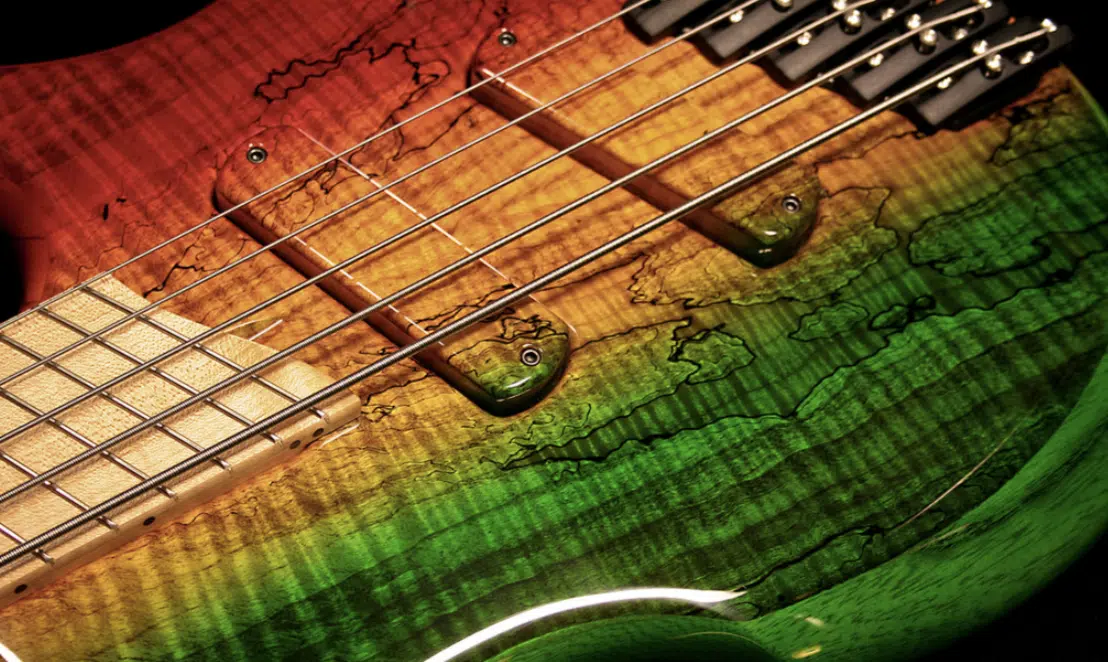
In reggae, the bass guitar plays a key role in defining your chord progression and the overall feel of a song as we mentioned a few times.
So, instead of just holding down the root notes, the bass often plays syncopated melodies that interact with the reggae chords and enhance the groove.
It creates a richer and more complex sound that producers should aim to replicate (and is in a lot of popular music in this genre).
When composing reggae chord progressions, the trick is to consider how the bass can move melodically while still supporting the harmonic structure.
For example, a bassline might ascend or descend stepwise through the scale 一 adding passing notes that weave around the core chords.
Or, it might outline a major chord or minor chord shape while incorporating rhythmic syncopation to create a more dynamic groove.
Incorporating a melodic bassline like that in your songs can seriously transform simple progressions into good chord progressions that stand out and captivate listeners.
Pro Tip: The bass guitar in reggae isn’t just about holding down the root notes.
Try creating melodic bass lines that syncopate with the other instruments for an additional layer of rhythm and harmony.
This technique is especially effective in creating those good reggae vibes.
-
Experiment with Simplicity and Two-Chord Progressions
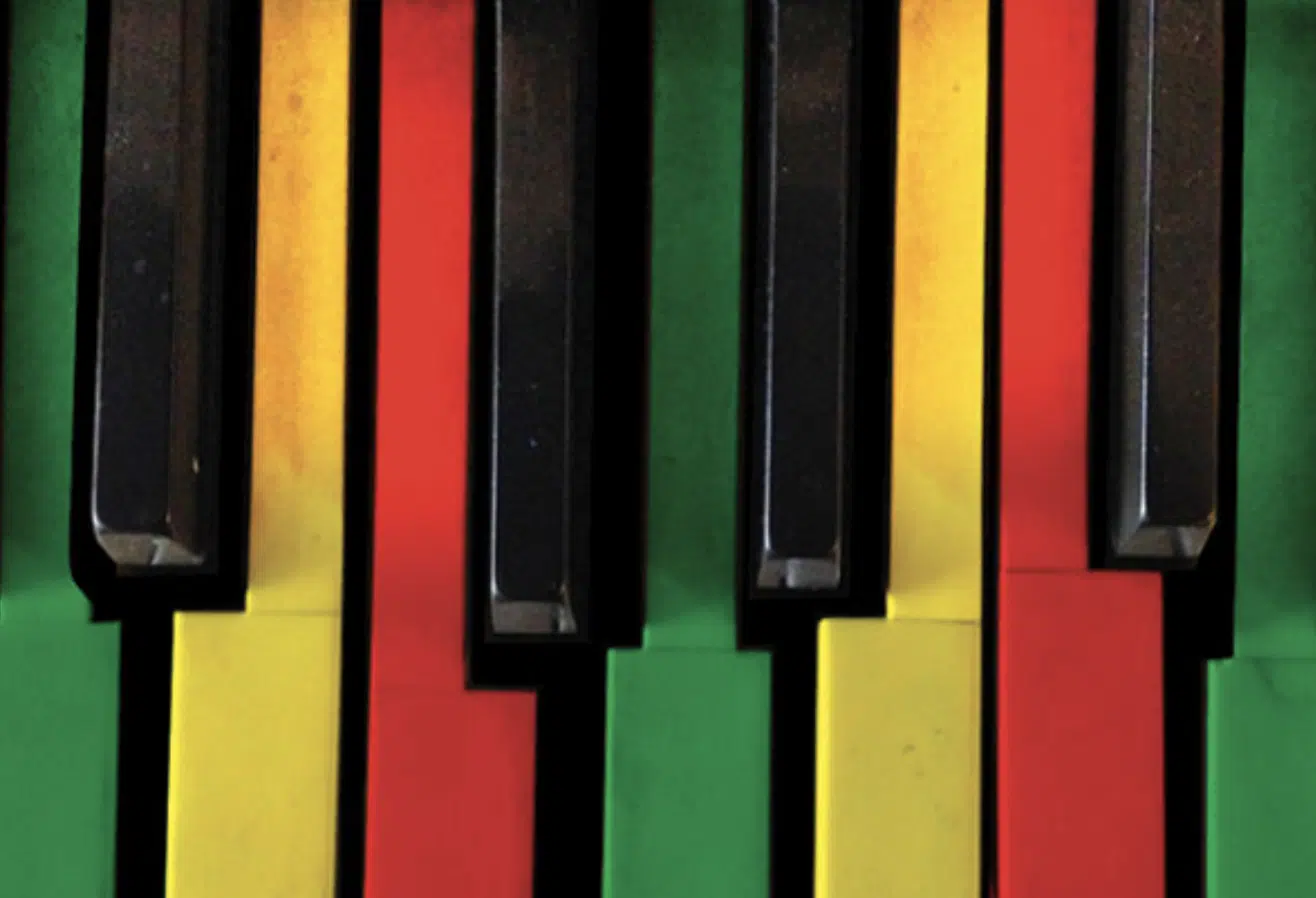
Some of the most iconic reggae songs rely on only two chords to create memorable and impactful sounds.
Using just two chords allows for a lot of rhythmic and melodic improvisation 一 giving each instrument space to really shine and do what it’s supposed to do.
A typical reggae song like “Stir It Up” by The Wailers shows how impactful this simplicity can truly be.
Producers should not shy away from using simple chord progressions as the foundation for a track.
By focusing on the rhythmic interplay between the reggae guitar and the bass, and exploring different grooves, you can create a compelling musical arrangement that doesn’t need a lot of harmonic complexity to be powerful.
Again, that’s the beauty of reggae music/reggae chord progressions… It’s simple, but insanely addicting/chill.
-
Experiment with Different Rhythmic Patterns
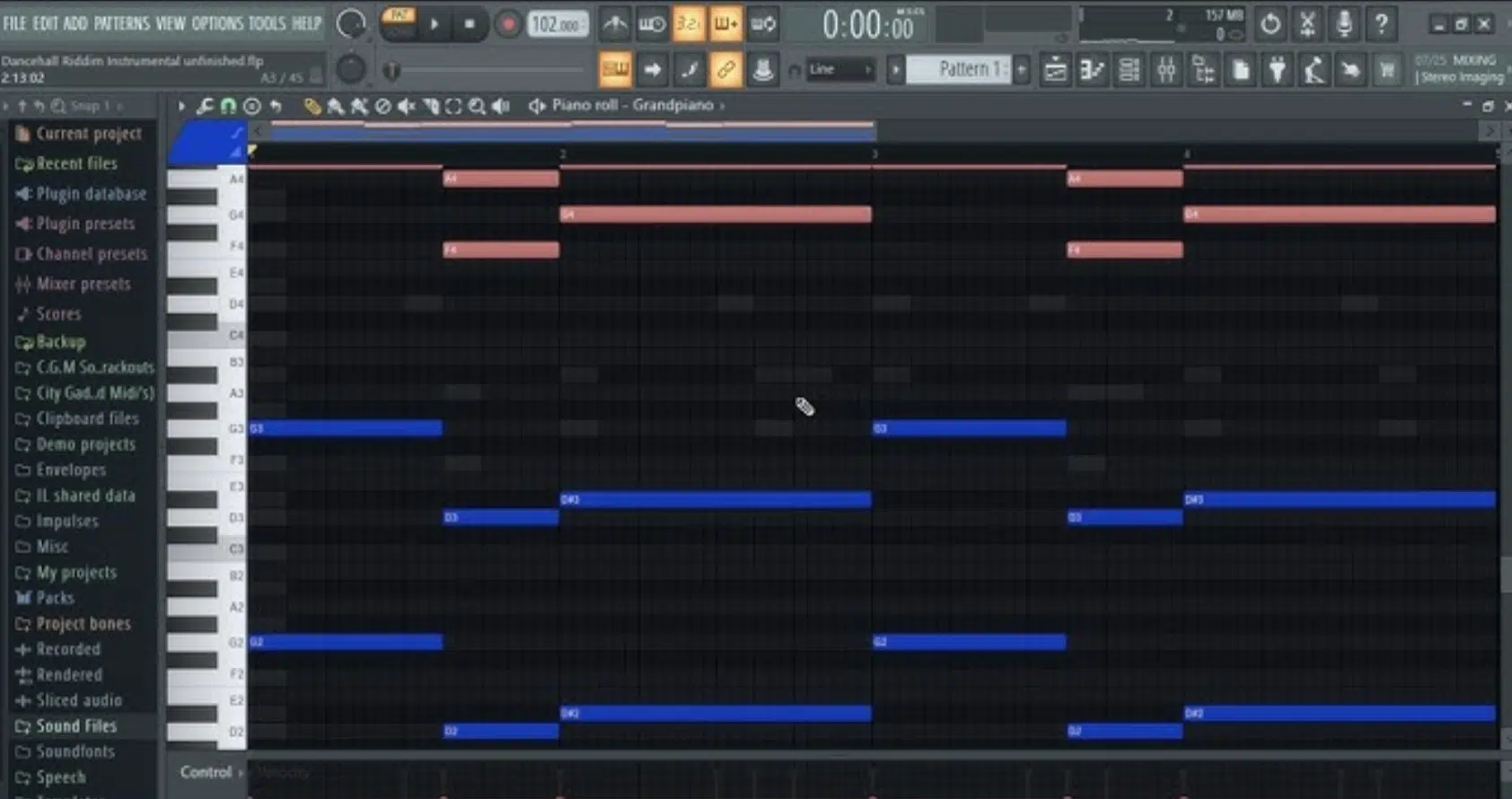
Don’t be afraid to create and experiment with different rhythmic patterns.
Reggae is known for its ability to blend styles, so incorporating elements/sounds from funk, blues, or even ska can add a fresh twist to your reggae chord progressions.
By mastering these reggae chord progressions and techniques, you’ll be well on your way to producing authentic and engaging reggae music.
Whether you’re looking to cover Bob Marley classics or find your own signature sound, these chord progressions provide a solid foundation for any reggae guitarist or reggae music producer.
Reggae Chord Progressions: Final Thoughts
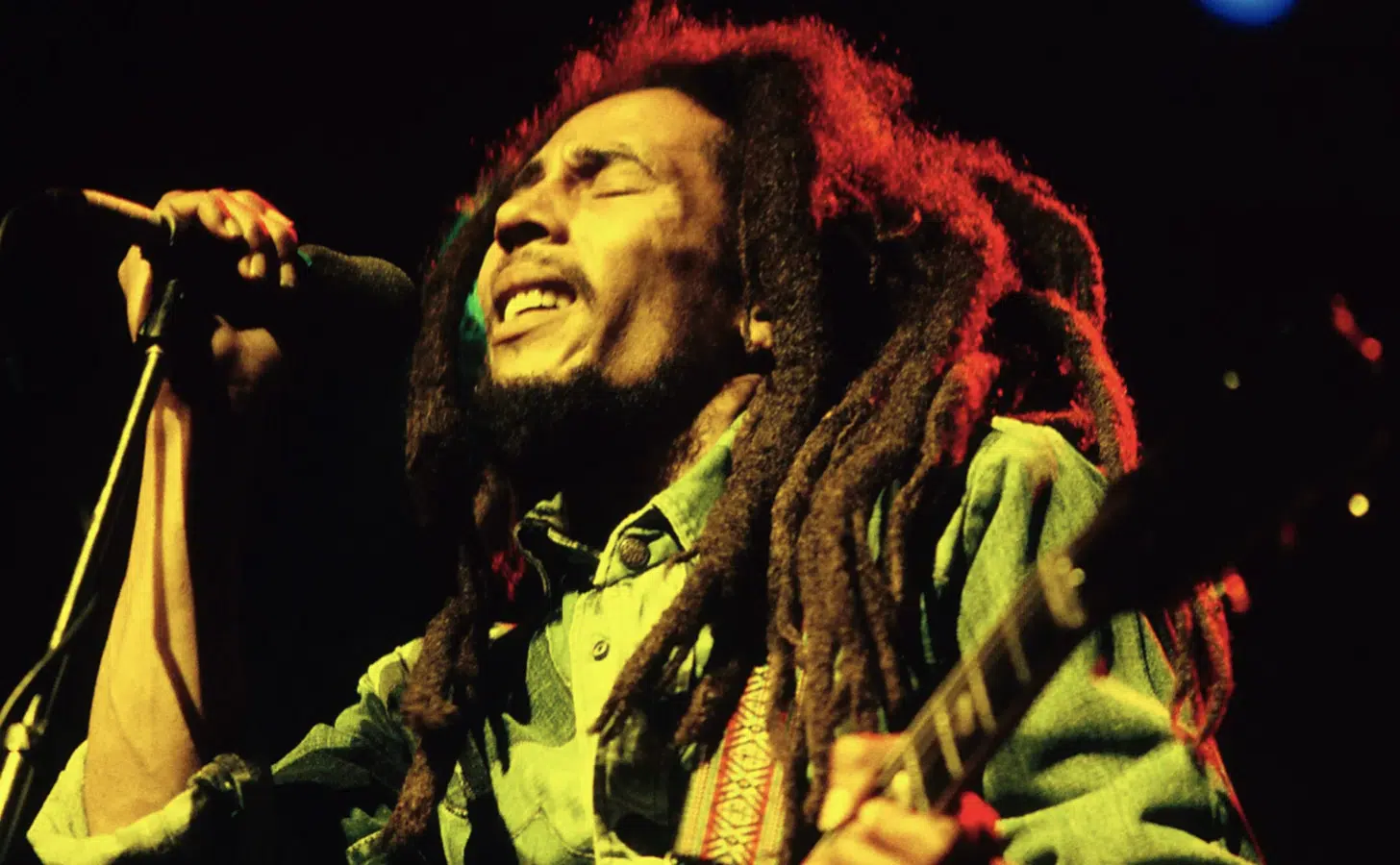
Mastering reggae chord progressions is essential for any music producer looking to capture the essence of reggae music.
By understanding the basic structures, unique rhythms, and melodic basslines that define this genre, you can create tracks that are authentic and innovative.
For those of you looking to take their reggae compositions to the next level, the legendary Reggae MIDI Chord Collection is the perfect way to enhance your beats.
It’s packed with over 120 carefully crafted MIDI files 一 covering a wide range of reggae chord progressions from the most classic to the more modern styles.
What sets this collection apart is its versatility and ease of use.
Each MIDI file is designed to be easily dragged and dropped into your DAW, which makes it perfect for both beginners and seasoned producers.
It helps you explore and experiment with authentic reggae chord progressions that can spark creativity and add a professional touch to your music.
Tthese MIDI files are also fully customizable, so you can modify rhythms, harmonies, and basslines to match your unique sound and style.
With the right tools and knowledge of reggae chord progressions, you can create music that your listeners will instantly vibe to and love (long after the song ends).
Bottom line, keep exploring, keep experimenting, and let your creativity flow so you can create the next great reggae track.
Until next time…







Leave a Reply
You must belogged in to post a comment.